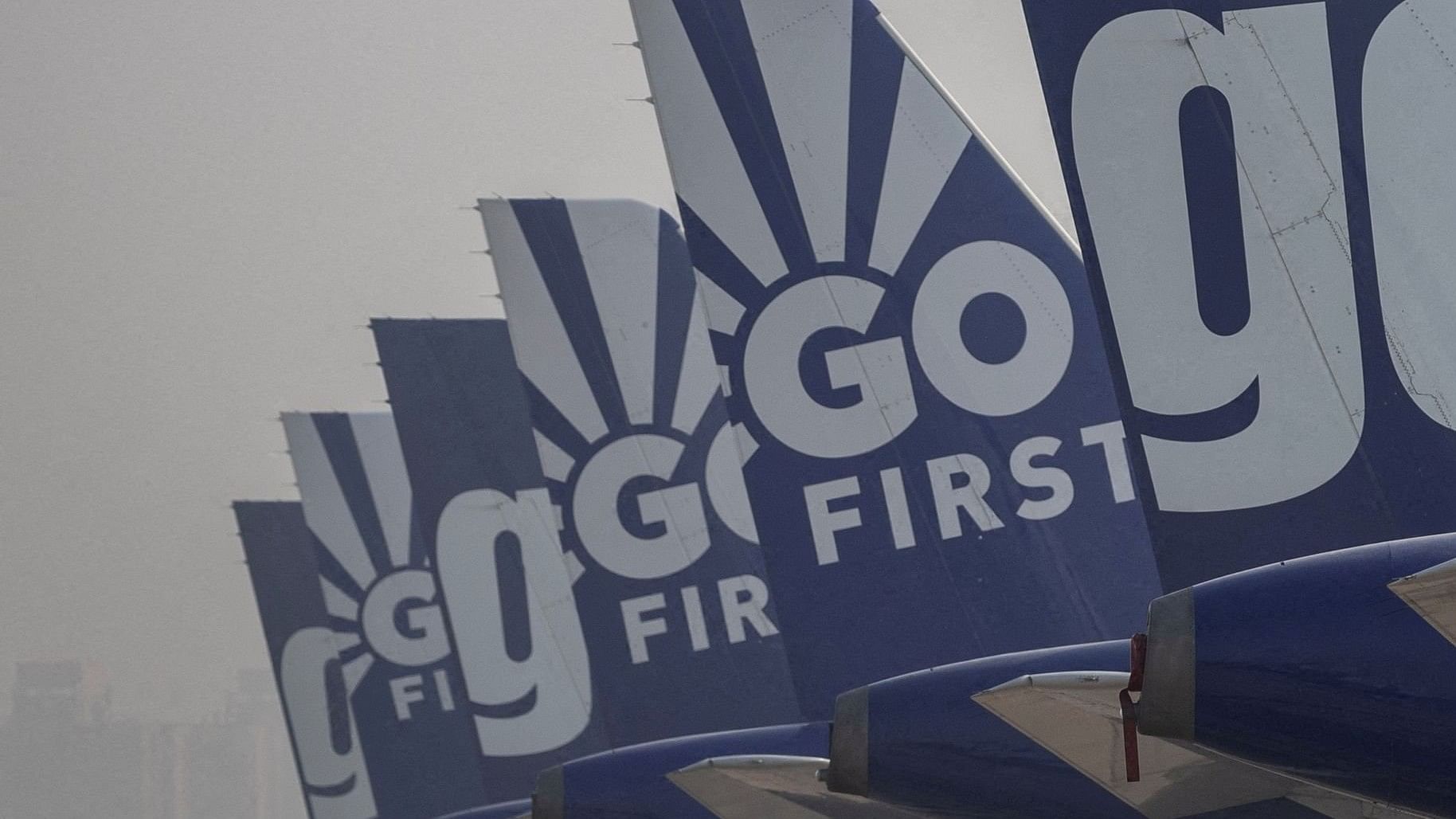
The tail fins of Go First airline's passenger aircrafts parked on the tarmac at the airport in New Delhi.
Credit: Reuters File Photo
Last week the National Company Law Tribunal (NCLT) granted a 60-day extension to the grounded airline Go First to complete its insolvency process. It was the fourth time it was doing so. In this issue of DH Deciphers, Abhilash Reddy, unpacks why the matter is dragging and how it got here.
How long has the Go First insolvency process been going on?
NCLT admitted Go First’s insolvency plea last year on May 10. But more than a year later, the case is still nowhere near resolution. The airline was granted its first extension on November 23, when the 180-day timeline for completing the Corporate Insolvency Resolution Process (CIRP) expired. The second extension happened on February 13 this year when April 4 was set as the deadline. The third extension was granted on April 8, which ended on June 3.
What was the reason given this time for seeking extension yet again?
Struggling to find a buyer the airline and also the assigned Resolution Professional (RP) bore the brunt of the ire of the two-member NCLT bench, which pronounced that this was the last extension being granted.
Seeking the extension it was argued that the situation had altered with the Directorate General of Civil Aviation (DGCA) deregistering the airline’s 54 aircraft at the behest of the Delhi High Court (HC), enabling lessors to reclaim their aircraft. With the RP not challenging the Delhi HC order as yet, prospective buyers have revised their offers, with one of them (EaseMyTrip’s CEO Nishant Pitti) even withdrawing his offer. Now, the lenders do not find the revised offers palatable. More time has been sought to extricate the airline from this fix.
Who are the suitors still in the fray?
SpiceJet's Ajay Singh and Sharjah-based aircraft lessor SkyOne FZE, which has not so long ago set up shop at Gujarat’s GIFT city, are the remaining contenders today.
The backstory on how Go First went bankrupt
The airline has blamed its downfall squarely on the malfunctioning of the Pratt & Whitney engines that left most of its A320neo fleet grounded, which had the company grappling with loss in revenue and other additional expenses to the tune Rs 10,800 crore. News reports at the time of its filing for insolvency pegged the airline’s total debt at Rs 11,463 crore.
How did Go First’s exit impact Indian aviation market?
According to DGCA data, Go First had a market share of 7-10% in terms of passengers carried. Its exit at a time when Indian air traffic was soaring, inevitably put pressure on the Indian airlines remaining, with SpicJet operation too doddering for a while. As Indigo and Air India, which have a market share of 80% with the remaining 20% divided among the smaller players, took on the added load, air fares started soaring. Such was the price rise that the Civil Aviation Minister felt compelled to intervene at one point.